Therefore, other signs are also important to clarify the diagnosis. For example, an increase in temperature that accompanies many processes indicates the presence of an inflammatory or infectious nature of the disease. The presence of dyspeptic disorders is characteristic precisely for diseases of the digestive system. Disorder of urination or pathological discharge from the vagina - about the pathology of the corresponding organs.
One of the symptoms accompanying the pathology of the gastrointestinal tract is flatulence, excessive accumulation of gas in the intestines. This symptom is not independent. It is combined with other manifestations of diseases of this system.
It is characterized by bloating, bloating. Often accompanied by abundant explosive gas evolution.
Flatulence in healthy people
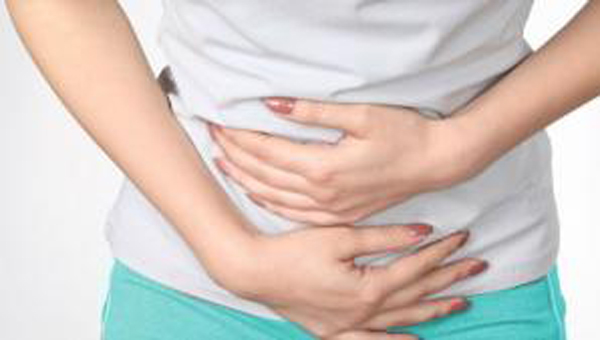 Flatulence can occur in healthy people due to an error in the diet:
Flatulence can occur in healthy people due to an error in the diet:
- when drinking carbonated drinks;
- when swallowing food in large portions;
- when eating foods that cause fermentation (fiber, legumes, pastries).
Some people experience bloating after drinking milk. In most cases, the occurrence of this symptom is due to the absence of the lactase enzyme involved in the breakdown of milk. Normalizing the diet by switching from whole milk to fermented milk products improves the situation. In all these cases, the temperature readings are normal.
Flatulence in pathological conditions
However, bloating can be a symptom of conditions caused by the presence of pathological changes in the body, especially in combination with fever and other severe dyspeptic disorders. These states are:
- intestinal obstruction;
- diseases accompanied by the development of dysbiosis.
The combination of bloating, temperature 37 and diarrhea is most often a manifestation of chronic enteritis (inflammation of the small intestine).
This disease is accompanied by increased formation of fermentative and putrefactive microflora, which characterizes dysbiosis. Patients complain of rumbling, heaviness and distention, less pain in the central abdomen. At the same time, the feces are mushy, with pieces of undigested food.
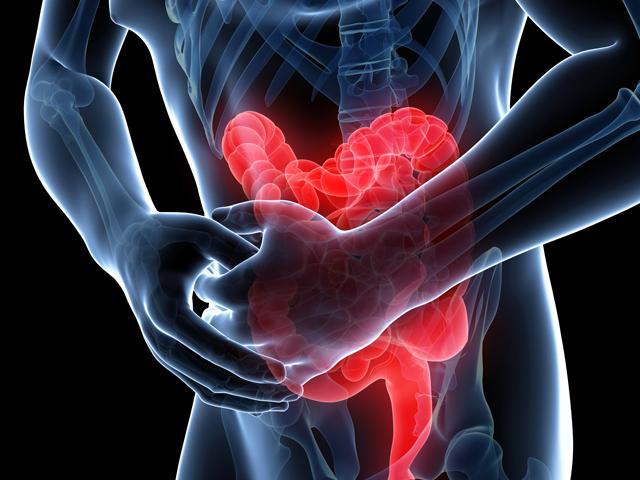 With chronic enteritis, there may be phenomena of general weakness, malaise, trembling of the limbs, cold sweat. In an isolated form, chronic enteritis is rare, more often combined with colitis. The symptomatology in this case is due to the involvement of the entire intestine in the process. The phenomena of diarrhea can be replaced by constipation.
With chronic enteritis, there may be phenomena of general weakness, malaise, trembling of the limbs, cold sweat. In an isolated form, chronic enteritis is rare, more often combined with colitis. The symptomatology in this case is due to the involvement of the entire intestine in the process. The phenomena of diarrhea can be replaced by constipation.
To combat flatulence, in this case, sorbents are used, as well as decoctions of chamomile flowers, caraway seeds, parsley, and dill. Balanced therapeutic nutrition plays an important role in the normalization of the condition of such patients. It is recommended to use low-mineralized mineral water in a warm form without gases 40 minutes before meals with reduced gastric secretion, and 2 hours before - with increased.
Chronic pancreatitis
In chronic pancreatitis, there is insufficient release of pancreatic enzymes. The consequence of this is indigestion, the development of enteritis, dysbiosis. Patients with this pathology also note bloating, rumbling.
Difficulties in diagnosing chronic pancreatitis are due to the fact that very often it is combined with other diseases of the gastrointestinal tract, or is their consequence. First of all, this applies to diseases of the liver and biliary tract. Since the digestion process involves the participation of different organs, the treatment of this pathology must be comprehensive.
Crohn's disease
Crohn's disease is a serious illness with the defeat of the predominant small intestine. The affected area is characterized by the presence of necrosis, ulceration, subsequent scarring.
The clinically acute form resembles appendicitis, in contrast to which there is flatulence, diarrhea mixed with blood.
For a chronic course in addition to common symptoms malaise, emaciation, the presence of constant pain, corresponding to the localization of the lesion, characterized by prolonged temperature, bloating and rumbling.
The presence of subfebrile condition for a long time may remain the only sign of this disease. A pathognomonic symptom, combined with diarrhea, abdominal pain, subfebrile condition, is the development of polyarthritis.
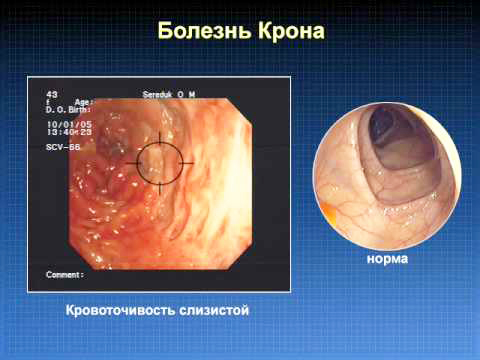 To clarify the diagnosis, a biopsy of the affected area is necessary. With regard to treatment, no specific therapy has been developed. Symptomatic treatment, corticosteroid drugs, antibiotics, antihistamines are used. TO surgical treatment they are treated only in case of complications (obstruction, perforation, bleeding), since relapses of the disease may occur after the operation.
To clarify the diagnosis, a biopsy of the affected area is necessary. With regard to treatment, no specific therapy has been developed. Symptomatic treatment, corticosteroid drugs, antibiotics, antihistamines are used. TO surgical treatment they are treated only in case of complications (obstruction, perforation, bleeding), since relapses of the disease may occur after the operation.
Nonspecific ulcerative colitis
Colon disease, which can also be accompanied by bloating, diarrhea, and fever, is ulcerative colitis. It is characterized by frequent, bloody issues from the rectum, painful urge to empty, vomiting. Acute form the disease can be complicated by perforation and the development of peritonitis.
Regardless of the form of the disease, the examination of such patients includes an X-ray examination of the intestines, sigmoidoscopy, microscopic examination of feces, bacteriological cultures for dysentery, protozoa. To exclude the oncological nature of the disease, a biopsy is indicated. The cause of the disease is not fully understood. In this regard, depending on the form of the disease, treatment may include:
- antibiotic therapy;
- chemotherapy;
- corticosteroid drugs;
- surgical intervention.
Intestinal obstruction
Symptoms of intestinal obstruction are constant bursting, cramping abdominal pain, bloating, vomiting of stagnant contents. Most often, the condition is a complication of surgical pathology. Confirmation of the diagnosis is an X-ray examination, which allows to identify signs of intestinal obstruction, to determine its localization. Surgical intervention involves the elimination of a mechanical obstacle or the creation of a bypass path for intestinal contents.
Despite the fact that bloating in combination with an increase in temperature is not the leading symptom in the development of gastroenterological pathology, these symptoms play a role in the comprehensive diagnosis of the disease, and also help in differentiation with other diseases.
Often a person can be bothered by such symptoms - a headache, a stomach hurts, rises, in some situations he feels sick and vomiting appears. Many diseases have such signs, so it is important to be examined on time in order to exclude dangerous infectious diseases.
Head and stomach pains due to rotavirus
2. With a malignant tumor in the brain, an inflammatory process in the nervous system, one feels unpleasant sensations in the abdomen, then the temperature rises above 38 degrees, the symptoms are aggravated in the morning.
3. With meningitis, there is a strong unbearable pain in the head, body temperature rises high, nausea, severe vomiting worries. A person cannot straighten his legs in the shins, after tilting the head it becomes even worse.
4. Because of hypertension, a strong headache, nausea, heavy occiput, pain in the forehead, which radiates to the temples, darkens before the eyes. Symptoms often worsen after severe stress.
Features of pain in the head and abdomen in a child
Unpleasant sensations are localized in the lateral parts of the head, while strong ones disturb. Dangerous intoxication of the body for children, because they have a weak digestive system, immune system, all this leads to irritated intestines.
Headaches, as well as discomfort in the abdomen, can be triggered by psychological reasons, when parents do not pay enough attention to their children, constantly raise their voices to them.
It is important, at the first symptoms, to undergo an additional course of examination, contact a neurologist, gastroenterologist, infectious disease specialist. Pass all the necessary blood and urine tests.
Often the child can thus react to certain medications, therefore, carefully give him vitamins, ascorbic acid. Monitor the child's nutrition in his diet should be as little sweet as possible, prohibit him from eating chips, crackers, sweet soda water.
In some situations, a headache heat body. Abdominal pains are provoked by unfavorable environmental conditions, oxygen starvation.
Treatment for headache, high fever, abdominal pain
1. Give up all unhealthy foods.
2. Take a contrast shower.
3. In cases of poisoning, rinse the stomach, drink sorbents.
4. In infectious diseases, symptomatic treatment is necessary.
5. The temperature can be brought down with antipyretic drugs.
So, all of the above symptoms can be a signal of a serious illness or poisoning, so you need to immediately consult with your doctor.
The Racha states that they are most often called in connection with complaints of severe pain in the abdomen with a significant increase in temperature. Often, such sensations are concentrated at the bottom or in the center of the abdominal cavity, so it is not always easy for a specialist to make a diagnosis right away. Sometimes dyspeptic symptoms, diarrhea or constipation, severe flatulence, faintness are noted.
The doctor must fully analyze the entire set of symptoms. The observed pathological signs may indicate both the presence of infection and the development of severe inflammatory diseases. Therefore, the specialist needs to take the question of the patient's hospitalization and, possibly, the appointment of an urgent operation. This is a very demanding task that requires a lot of experience and knowledge.
Diseases of a non-infectious nature
Diseases of the digestive system are rather difficult. They are accompanied by a certain set of symptoms, according to which we can immediately say that the problem lies in the defeat of some organ of the gastrointestinal tract. Usually, such cases require urgent treatment.
Most often, there is abdominal pain, high temperature (38-39), nausea, vomiting, diarrhea, etc.
Most often, this symptomatology accompanies:
Acute appendicitis;
stomach ulcer;
acute cholecystitis;
hepatitis;
acute pancreatitis;
duodenitis;
crayfish;
peritonitis.
With these diseases, there is pain in the abdominal cavity, localized in the side or spread throughout the abdomen, belching, vomiting, fever. These symptoms do not go away, but even get worse over time.
In this case, there may be blood in vomit, urine, or other secretions. Therefore, the patient requires a complete diagnostic examination.
When the stomach hurts and the temperature is 38-39, then severe gastritis, poisoning or peptic ulcer disease can manifest itself. It should be borne in mind that discomfort can spread to the entire abdominal region.
Therefore, it is better to consult a gastroenterologist, especially if the pathology has already been diagnosed earlier. You should not wait until everything passes or hope for the so-called " folk remedies". Aggravation threatens with perforation of a stomach ulcer and further development of peritonitis. These conditions are already life threatening for the patient.
If the intensity of the symptoms is high and the person cannot reach the clinic, it is necessary to call an ambulance. The arrived team of specialists will assess his condition and take him to the emergency hospital. There, a gastroenterologist or surgeon will conduct an examination, diagnose and decide on further hospitalization. Operation may be required in this case.
Emergencies
If the stomach hurts and the temperature is 38 in an adult, these symptoms should be alarming in any case. In no case should such manifestations be ignored. Even if the discomfort is not too pronounced, the fever appeared only recently, but there are other alarming signs, you cannot postpone the call to the doctor. In the absence of timely medical care everything can end in the death of the patient.
This becomes especially important when emergencies arise. They usually include unbearable abdominal pain, strong rise temperature and vomiting. In such cases, there should be no self-medication or self-diagnosis. An ambulance should be called immediately after these symptoms occur.
Most often, such serious conditions develop with the following dangerous diseases.
Acute appendicitis
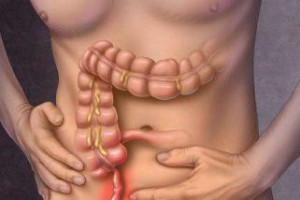 The pains arise in the abdominal cavity, continue for quite a long time, then concentrate in the right hypochondrium. Sometimes the soreness is diffuse and can manifest itself in a variety of places. However, most often the patient has a lower abdominal pain and a temperature of 38-39, severe vomiting, nausea and lightheadedness are noted, sometimes fainting occurs. Fever indicates the development of a strong inflammatory process... Such a serious condition can progress very quickly, leading to the appearance of an abscess, and then peritonitis.
The pains arise in the abdominal cavity, continue for quite a long time, then concentrate in the right hypochondrium. Sometimes the soreness is diffuse and can manifest itself in a variety of places. However, most often the patient has a lower abdominal pain and a temperature of 38-39, severe vomiting, nausea and lightheadedness are noted, sometimes fainting occurs. Fever indicates the development of a strong inflammatory process... Such a serious condition can progress very quickly, leading to the appearance of an abscess, and then peritonitis.
In this case, it is advisable for the patient's relatives to remember in detail what preceded the attack in order to correctly explain everything to the arrived team of specialists.
A person's condition is usually quite serious. He lies bent over, he can vomit. Sometimes he is unconscious. The doctor examines him, palpates the abdominal cavity, prescribes clinical analysis blood. In this case, pronounced leukocytosis and a significant increase in ESR are of great importance. Then an urgent surgical intervention is required, which is a necessity.
Peritonitis
It is characterized by a complication of an inflammatory or purulent process in the abdominal cavity and may result from:
- Appendicitis
- intestinal abscess
- trauma
- thrombosis
- ruptured gallbladder or cyst
- malignant neoplasm
- complications of peptic ulcer or urolithiasis
- acute pancreatitis
- violation of the rules of asepsis in the postoperative period
Peritonitis is characterized by severe abdominal pain, high fever, pallor of the skin, a sharp drop in blood pressure, and confusion. One of its most characteristic signs is the strong tension of the abdominal muscles, so that they practically stiffen. It is impossible to palpate the patient's abdomen in this state.
Before the arrival of the ambulance, it is necessary to lay him on his back, to provide him with the possibility of free separation of vomit, an ice pack should be placed on the painful area. In this case, immediate surgery is required to save the patient's life.
Acute pancreatitis
With such a disease, the pain is first diffuse, and then localized in the left side or has a shingles in nature. Very often it gives in the back. The patient is severely nauseous and vomits. The body temperature is significantly increased. Symptoms become most intense three days after the onset of the disease. She requires urgent hospitalization in a surgical hospital.
Sharp jade
Its main manifestations are severe abdominal pain and high fever. Differential diagnosis can be made by tapping the kidney area. Such touches respond with strong discomfort in the lower back.
With this disease, the patient complains of urinary retention, its darkening, and an unpleasant odor. It threatens with severe intoxication of the body, the development of uremia.
Very rarely, these symptoms can hide a harmless condition behind them. High fever, severe and aching pains in themselves indicate a sharp distress. Therefore, no medication should be given to the patient. They not only make it difficult to diagnose, but can even lead to death.
Abdominal pain and temperature 38 can indicate a very serious condition that requires urgent help. At the slightest suspicion of the development of the listed pathologies, further developments cannot be expected. An ambulance should be called as soon as possible.
Infectious diseases
Most often, pain in the abdominal cavity, combined with fever, occurs with infections of the digestive system. This is due to the rapid multiplication of pathogenic microflora with the simultaneous release of toxins and decay products into the bloodstream. Therefore, such pathologies affect the entire human body.
Abdominal pain, vomiting and a temperature of 38-39 are manifestations of almost all infectious diseases and poisoning. In this case, you also cannot self-medicate.
In this way, they most often manifest themselves:
- Salmonellosis;
- hepatitis;
- dysentery;
- food toxicoinfection;
- staphylococcus infection;
- rotavirus infection;
- botulism;
- cholera.
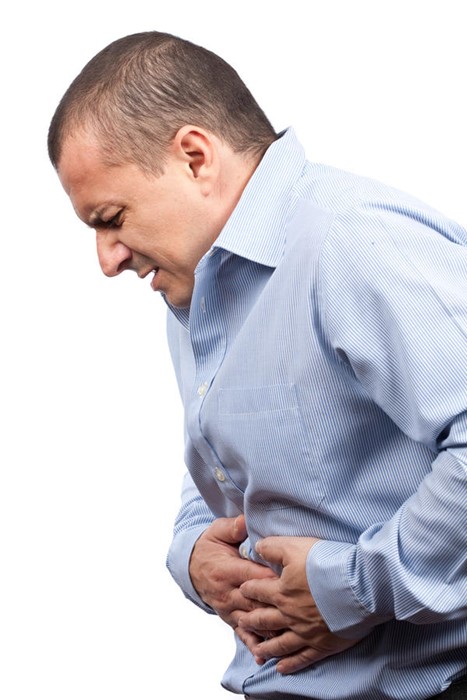 When they occur, most often the patient complains that he has pain in the lower abdomen and a temperature of 38-38.5. These infections are characterized by general intoxication of the body, severe diarrhea, and headache.
When they occur, most often the patient complains that he has pain in the lower abdomen and a temperature of 38-38.5. These infections are characterized by general intoxication of the body, severe diarrhea, and headache.
A person's stomach grabs so strongly that he is unable to endure. After using the toilet, the pain relieves a little, but soon returns. The stool is usually thin, with mucus, pus, or even blood.
In this case, the patient needs urgent medical attention. Most often, he needs urgent hospitalization, not only for the sake of preserving his health and life, but also for the sake of being in quarantine. These diseases are very often extremely contagious. Most often they suffer from people with reduced body defenses. In this case, it is also impossible to expect possible improvement, you should urgently call an ambulance.
While waiting for her, it is necessary to remember what a person ate or drank the day before, whether he swam in questionable bodies of water or visited places that do not meet sanitary requirements.
In such cases, it is sometimes necessary to take the patient's feces for analysis, including for culture with the determination of antibiotic sensitivity.
It is after this that the appointment of the most effective drugs is possible. A person must stay in the hospital until the results of the research are completely free of any colonies of pathogenic microorganisms in order to exclude cases of possible carriage.
Helminthiasis
Often, severe pain in the abdominal cavity with a significant increase in temperature causes helminthic invasions. The most common among them are:
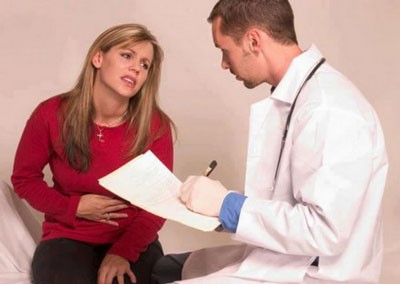 Helminthiasis is characterized by severe abdominal pain, nausea, vomiting, diarrhea, fever. In addition, the patient may experience yellowness of the skin, chills, and a sharp change in mood.
Helminthiasis is characterized by severe abdominal pain, nausea, vomiting, diarrhea, fever. In addition, the patient may experience yellowness of the skin, chills, and a sharp change in mood.
The danger of helminthic invasions is that they may not manifest themselves for a long time. Symptoms are subtle and pain is rarely severe. The threat is development dangerous complications in the absence of medical care for an extended period.
Differential diagnosis is usually carried out by analyzing feces for eggs, worms and protozoan cysts. If, at the same time, pain in the lower abdomen and temperature are observed, then usually a clinical blood test for the presence of eosinophils and PCR reactions to individual helminths is also prescribed. Sometimes x-rays and ultrasounds are required to determine if the liver, gallbladder, and pancreas are affected.
Pathology of other organs and systems
Abdominal pain, accompanied by a significant rise in temperature, often occurs with other diseases. These include:
- Renal colic;
- ovarian rupture;
- ectopic pregnancy;
- gynecological diseases;
- urolithiasis;
- glomerulonephritis;
- acute pyelonephritis;
- radiculitis;
- malignant neoplasms;
- myocardial infarction.
With these diseases, there is severe pain in the abdominal cavity, a sharp jump in temperature, significant intoxication of the body, spotting, etc. However, in this case, patients may complain of difficulty urinating, the presence of blood and mucus in the urine.
An attack of renal colic can become especially dangerous for the patient. In this state, severe pain arises suddenly and becomes so unbearable that the patient cannot bear it. This is a very dangerous condition that threatens the development of anuria, or rupture of the ureter.
In such cases, it should be especially alarming that simultaneously with severe pain in the abdomen, there is also a heaviness in the lower back, a feeling of pressure in chest, numbness of the limbs. This suggests that other organs are affected. They provoke circumstances when unpleasant sensations are given to other areas. Very often this happens with diseases of the kidneys, the female genital area or intervertebral hernia.
For a specialist, the exact definition of the source pain is the main task. Therefore, he must examine the entire human body. If their most intense focus is felt in the abdominal cavity, then the patient may not pay attention to the pressure in the lower back, chest or back. This is especially dangerous if, on his own initiative, he took analgesics and antipyretic drugs before the arrival of the doctor. In this case, immediate hospitalization is required with a complete examination of the patient.
When is urgent medical attention needed?
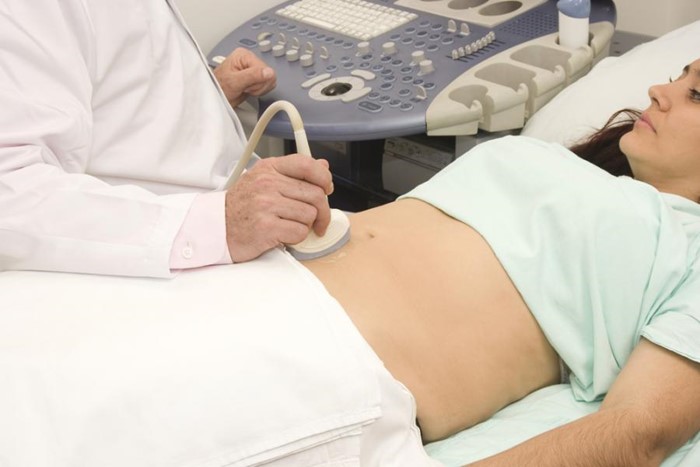 In any case, when an adult has a stomach ache and a temperature of 38, it is better not to postpone calling an ambulance. Only a doctor can say with certainty which disease is the root cause. Usually, even a specialist requires not only examination of a person and taking anamnesis, but also laboratory and instrumental studies in order to accurately diagnose. Therefore, no action can be taken on your own so as not to complicate further treatment.
In any case, when an adult has a stomach ache and a temperature of 38, it is better not to postpone calling an ambulance. Only a doctor can say with certainty which disease is the root cause. Usually, even a specialist requires not only examination of a person and taking anamnesis, but also laboratory and instrumental studies in order to accurately diagnose. Therefore, no action can be taken on your own so as not to complicate further treatment.
Abdominal pain with a rise in temperature is an alarming enough symptom to be taken lightly. Therefore, before the arrival of a specialist, it is necessary to provide the patient with first aid and, if he is in a serious condition or lies unconscious, prepare a detailed story about the development of the disease for the doctor.
In general, it is best to make it a rule to see a therapist or gastroenterologist whenever you feel pain in the abdomen accompanied by fever. Even if the patient's condition is satisfactory, it can quickly and dramatically deteriorate.
Therefore, you should not wait. If a person can walk, he needs to make an appointment with a doctor. If he is feeling well, but not too well, then a health worker should be called at home. And if a patient has a stomach ache and he experiences severe suffering, then his relatives, without hesitation, should call an ambulance.
With timely referral to specialists, usually occurs complete recovery sick, although this requires a long and complex treatment.
Apr 18, 2017 Victor Marchione
≫ More information
